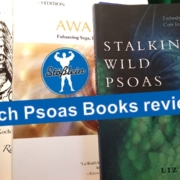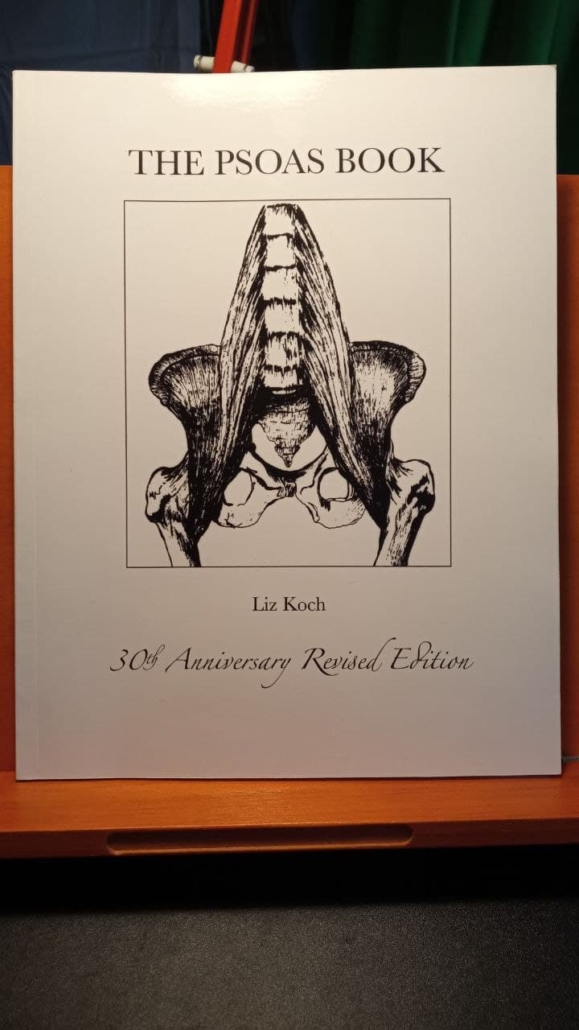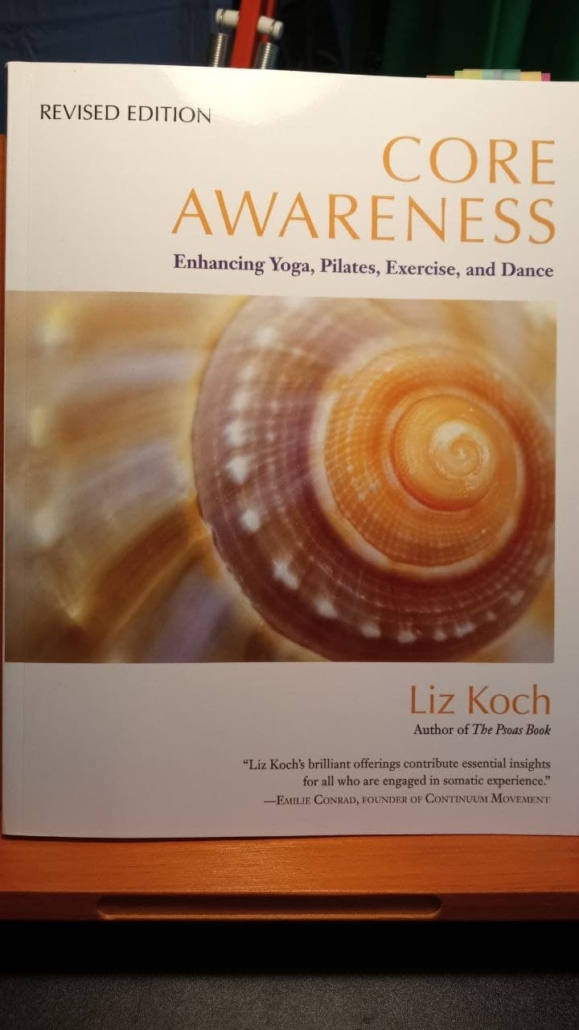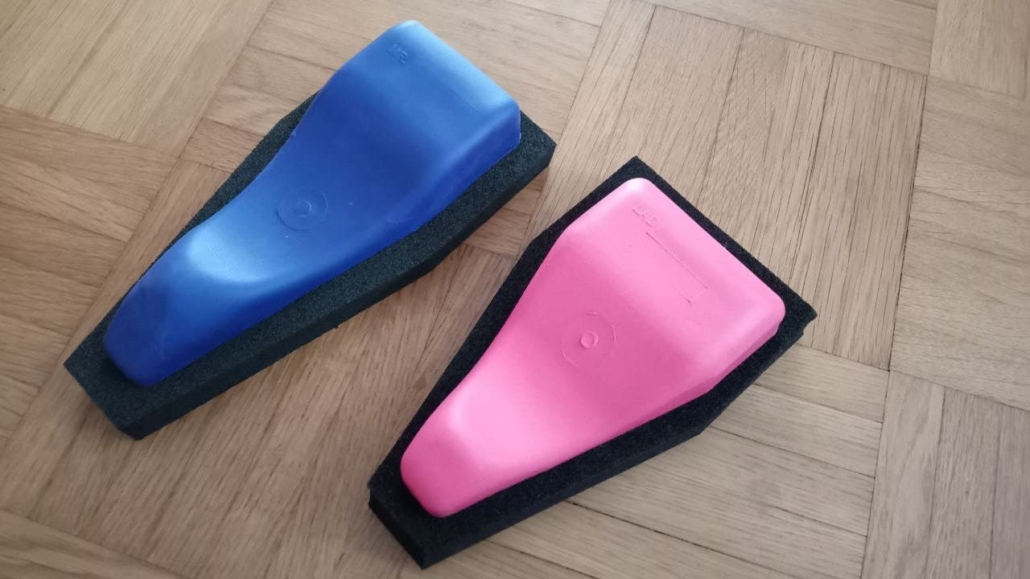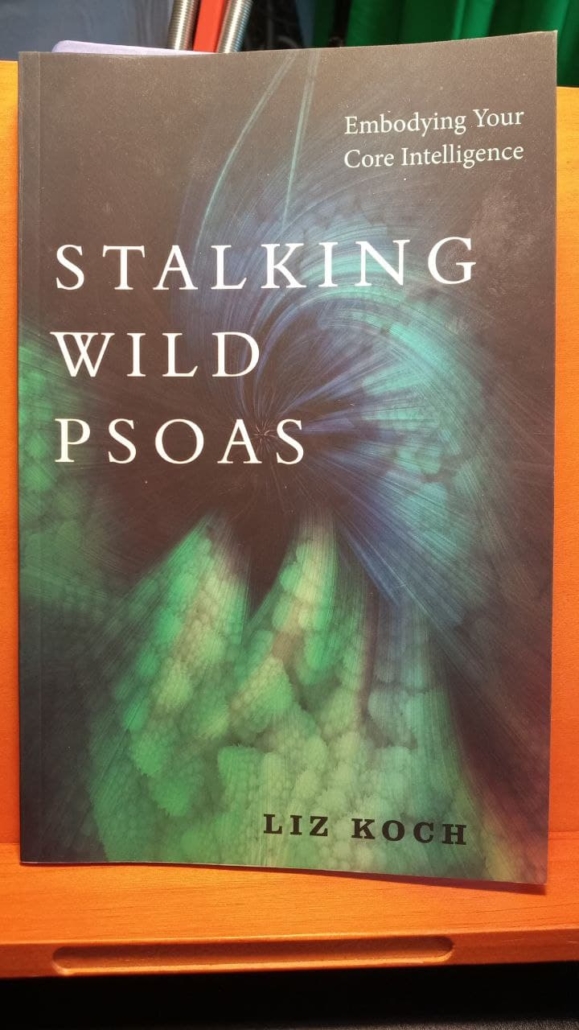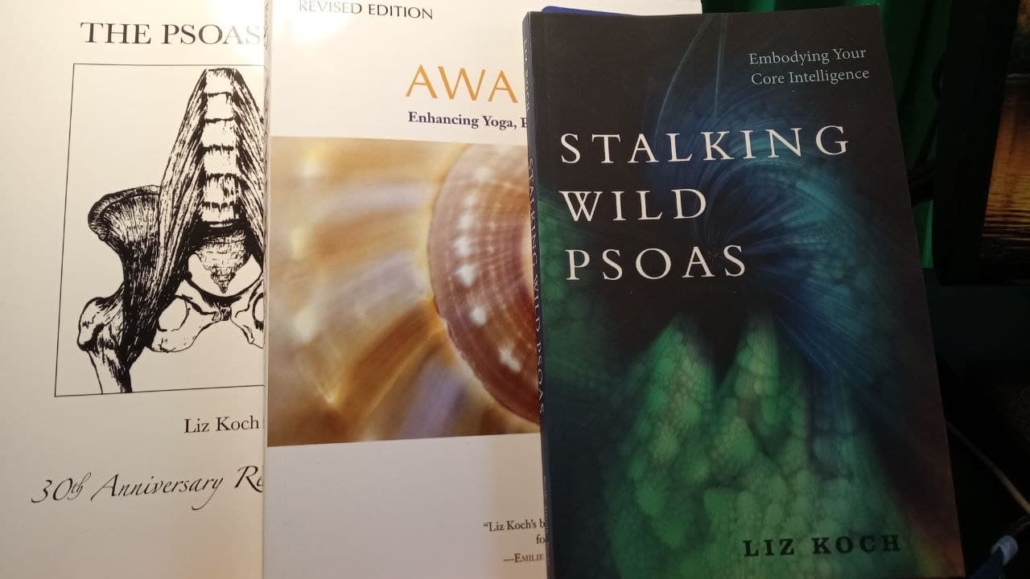I have read and STUDIED all of Liz Kochs’ books, which is a total sum of 475 pages.In a nutshell, all of her books she has published so far are a triumvirate, honoring the Psoas, but, they are so much more than just plain anatomy books!First of all the question arises which of Liz Koch’s books you should read. Well, from my perspective, I’d highly recommend you to read – and absorb all their information – all of them. But, this – like always – depends on how much you already know and what (else) you want to learn. So, in a nutshell, and if you are totally new to the fascinating topic of the (Ilio)psoas I would recommend you to start with the basics, respectively “The Psoas Book” (affiliate link).
The Psoas Book – Psoas 101
The Psoas Book is one of a kind, despite the fact that it only has 96 pages (in the 30th Anniversary Revised Edition from 2012).
But, as you know, you should not judge a book by its cover, respectively by its number of pages!
It does not depend on the amount of pages but on the quality of information that, as the word says, will bring you in (a) new formation.
A single blog article of 2500 words is by far not extensive enough to cover everything Liz Koch presents in her “The Psoas Book”. Therefore, I’ll just give you some of my biggest takeaways.
A super interesting fact is the following:
The origin of the Psoas (M. psoas major to be precise) is located at the 12th thoracic (T12) vertebra, respectively the 1st lumbar (L1) vertebra (depending on your size and biological individuality).
That is of importance as the psoas starts its way downwards in the direction of its insertion (the lesser trochanter on the back of the femur), whereas on the same height (T12/L1) its “counterpart” the M. trapecius (pars ascendens to be precise) starts its way up.
Both at the height of the solar plexus. This special point also marks the place of the third chakra.
This point is of uttermost importance as it is the pivot point between assimilation and elimination.
In all aspects, energy-wise. No matter on which level of perspective you are observing it. On a pure energetic level (e.g. chakra-wise) or on a plain physical level.
All organs located above this point are, more or less, “constructed” for assimilation (i.e. the ear, the eyes, the mouth, the lungs etc.). The heart might be an exception as the blood-system is a hermetic system (although it assimilates oxygen and eliminates CO2).
If you want to learn more about the theory that the heart might actually not be a pump, I’d recommend Thomas Cowan’s Book: “Human Heart, Cosmic Heart” (affiliate link).
Below the solar plexus are the organs that are associated with elimination, like the gastro-intestinal tract, the urogenital tract and the reproductive system.
To learn more about this important pivot point in our human body I recommend you my separate article with the title: “Structural Balance – what is Stößlein-Strength?”.
Another super interesting hint of Koch’s book was the potential influence of the psoas to the reproductive system. Especially for women. A point that seems to be often overlooked!
Liz writes:
“The constricted psoas also influence the reproductive system. The nerves going to the uterus and the ovaries directly penetrate the psoas. When the psoas is dry and shortened, it can both compress nerves and limit space in the pelvic basin, which can result of cramping inside the uterus, bur are caused by a constricted psoas” (Koch, 2012).
So, next time your client/patient and/or girlfriend is dealing with menstrual problems you might consider the psoas!
Other lines I highlighted in “The Psoas Book” reminded me of something my Strength and Conditioning mentor, Charles R. Poliquin, aka “Strength Sensei” (R.I.P.) used to emphasize. Koch writes:
“(…) babies who are not placed on their stomachs cannot explore belly-to-head extension, which enables them to naturally arch through the spine, lengthening their psoas.” (Koch, 2012).
A baby/toddler that does lie on its back all the time does not learn to lift of its heavy head, which won’t strengthen its neck muscles. This might be a problem in later life. We’re all born into flexion and struggle to extend and erect in life.
Therefore it cannot be early enough to learn how to extend your body!
The benevolent reader can learn more about the extreme importance of the neck and its correlation with the eyes and posture in my articles:
- Neck Flex – Attack your neck!
- Posturepo Brain Coach Performance Certification Review
- Suboccipital Muskeln – Never Skip Neckday!
My biggest takeaway of Liz Koch’s “The Psoas Book” is though that she does recommend NOT to work on the psoas directly with any kind of manual therapy!
Of course I’ll give you her explanation. Liz writes:
“Directly attempting to manipulate the psoas, however, contradicts the very essence of the psoas as a messenger for integrity. Because the psoas muscle is a part of the fear reflex system and the sympathetic neuro-core (the connective tissue enclosing the spinal cord, psoas, and kidneys) when a practitioner directly palpates the tissue, this sabotage the instinctive response of the psoas.” (Koch, 2012).
This is of special interest for me as, in fact, I’ve been using frequency specific microcurrent (FSM) with bio-electricity to treat patients’ psoas without manually adjusting a potentially tight Psoas, but have also recommended using a device called the Pso-Rite® for manually self-treatment.
You can read more about this tool in my in depth article named:
Also fascinating is the Psoas’ tight relationship to the diaphragm! In the article mentioned above I already wrote that:
“The ancient Greek belief was that what we call “the soul” was also to be found within your dia/phragm. That’s what the term schizo/phrenic derives from! As the belief goes your dia/phragm inheres your soul. Let’s use another brief decryption of those Latin, respectively Greek terms to see what that “fuzz” is all about. The term dia/phragm is a combination of the Latin prefix dia = through and the suffix phragma, respectively Greek diaphragma = “partion wall” (Becher et al., 1995). Moreover, diaphragm and phren describe the same muscle, on the one hand you have Latin (diaphragm) and on the other you have the Greek term = phren (Becher et al., 1995). In addition to that, you have another Greek term: schizein = to split, to divide (Becher et al., 1995). Now, let’s connect schizein with phren and, voila you get: schizo/phrenic, which exactly describes what it is supposed to be: a divided/split apart personality, respectively soul!” (Stoesslein, 2020).
Core Awareness, Revised Edition: Enhancing Yoga, Pilates, Exercise, and Dance
This is a great “one-liner”, for a great book! In comparison to Koch’s other three books, this one is the most illustrated one.
As the title promises you will find lots of instruction of how to start embodying your core.
Thinking in principles is something I encourage people to do and I was happy to find this approach in Liz’s book, too.
For example, when she states, that:
“Functioning like a secondary psoas, the SCM opens the throat. The full expression of the SCM is witnessed in the sympathetic fear response, primitive reflexes (startle), and full-body orgasm. Intimately close to the vagus and jugular nerves, this secondary psoas moves upward, freeing the head to align with the torso and fully opening the midline fofrm anus to mouth” (Koch, 2012).
The abbreviation “SCM” stands here for: “M. sternoclaidomastoideus”. By the way, this “as above so below” approach is one of the 7 hermetic laws of the Kybalion (affiliate link). Another great book I highly recommend you to read!
Core Awareness is so much more than an ordinary anatomy book. It webs an endless net of different points of view, integrating methods from Traditional Chinese Medicine (TCM) and other ancient approaches.
One of the many things I highlighted was that:
“(…) liver and gallbladder govern the ligaments and tendons. Lungs, with potentially lengthen the psoas, positively affect the liver and gall bladder energy.”
As well as:
“(…) survival, and fear all qualities associated with the element of water. The water element is revealed as kidney energy and expressed with the solar plexus where the psoas and the kidney organs reside (…) The kidney meridian energetically connects the upper psoas to the foot. Right in front of the arch of the foot is a major kidney point called the well of life, or bubbling spring(…)” (Koch, 2012).
The Psoas (M. psoas major) is a quite fascinating fellow! As I already mentioned, Koch does not seem to be a fan of deep massaging and/or palpating, as well as invasive myofascial manipulation.
She justifies this by augmenting that:
“The human psoas has no viable fascia in the upper muscle and very little in the lower psoas as it passes over the hip socket” (Koch, 2012).
I have mentioned before that “Core Awareness” is a source of inspiration that will shed light on the psoas from lots of different “angles”.
As a result, you will e.g. learn about the psoas in the context of unsolved, unconscious emotionally/mental traumata.
With the psoas being the “muscle of the soul” it is not astonishing that:
“(…) potty training was an emotionally upsetting issue, the adductors over time may begin to shorten. An inward rotated leg may sifnify that potty training (…) was started to early ar that shame and anger engendered a fear-based experience for the child” (Koch, 2012).
By the way, I’d like to put coffee enemas up for discussion as a possibility to loosen a too tight psoas or, at least, combine it with a basic exercise Liz Koch recommends, named Constructive Rest Position (CRP). An exercise to explore somatic core-awareness.
If you want to learn more about coffee enemas, please feel free to read my article:
After the theoretical part of the book, the second half deals with a myriad of exercises either to learn how to feel your psoas and/or with how to release it.
The good thing is that you do not have to be a circus artist to preform Koch’s recommendations.
You can start from pretty much any point in your life, no matter how good or bad your posture/emotional anatomy might be!
If you want to learn more about Emotional Anatomy in general I’d recommend you to read Staley Keleman’s book with the same title: “Emotional Anatomy” (affiliate link).
Again I cannot emphasize enough that Koch seems to follow a holistic approach. She does not seem to look at the world through a straw! She, i.e. also recommends to wear, what she calls, psoas savvy shoes.
These are so called “barefoot” shoes, which is an “oxymoron”. I’m a huge advocate of these kind of shoes. This is an important topic for proper postural alignment. Please feel free to read my associated articles:
EDIT: After having corresponded with Liz, prior to publication of my article, she mentioned:
“Just to say I don’t approve of barefoot shoes in the city – only in your garden…they don’t have enough rebound for cement….a little buoyancy goes a long way in keeping your psoas juicy. To have a juicy (not a released) psoas we need hydrated connective tissue.” (Koch, 2021).
Last but not least I found lots of cross-references and recommendations in Liz’s book. One of the most interesting ones was “Hara: The Vital Center of Man” (affiliate link) by my fellow landsman Karlfried Graf von Dürkheim.
Another one is the so called “Sacro Wedgy®”, a device that is supposed to help you with your releasing your (ilio)psoas. I talked to the Cindy Littlefield (the comapany’s CEO) and she sent me these devices for testing:
You will find an in-depth review about it, coming soon!
Stalking Wild Psoas
Then there is “Stalking Wild Psoas”. The book that has the most appealing cover, at least to me, in comparison to Koch’s other books.
Why do I mention this? Well, because once you have learned and realized that EVERYTHING IS VIBRATION/ENERGY you will have a different look at the so called “reality” we live in.
Colors have different vibrations, too, and different colors/vibration might resonate more with you and your energetic state of being than others.
Talking Wild Psoas consists of 9 essays in which you will read about anecdotal psoas-knowledge, “out of the trenches”.
Amongst others you will also find a foreword by Tom Myers, the inventor of “Anatomy Trains”(affiliate link), which I appreciate a lot! You should take a look in his fascinating work, too!
If you are totally new to the topic of the psoas and you’re just about to dive into it, I’d recommend you to stalk the wild psoas at last.
But, you will probably enjoy it the most, after having learned the basics first.
Liz will teach you about the following:
- Changing your Language
- Embryological Gesture
- Biomorphic Expression
- Your Fluid Midline
- Core Messenger
- Landing and Locating
- Becoming Integral
- Movement as Medicine
- Rewilding Your Psoas
- Falling Catching Exploration
In the appendix you will get to know about a special psoas-technique called “Falling Catching Exploration”. This is a great exercise to be done with a partner.
Liz Koch Psoas Books Review Conclusion
First of all, I would like to thank Liz Koch for her effort of summarizing her knowledge of working with the psoas and for accumulating this information in print.
We are lucky to have access to her knowledge and might use it to transform our own lives and/or the lives of others.
Another wonderful “piece” added to (not only) the holistically therapeutic “Kaleidoscope”!
Depending on your preexisting knowledge I’d recommend you to read Liz’s books in this specific order:
- The Psoas Book
- Core Awareness
- Stalking Wild Psoas
To draw a conclusion, I encourage you to think of these books as an investment in yourself!
I would really like to discuss some topics with Liz Koch to see her point of view according to some specific questions:
- Is there a benefit of using Power Plate Training (Whole Body Vibration Training) for releasing the psoas?
- Will Frequency Specific Microcurrent (FSM) be able to resolve too tight psoas tissue just by using the right bio-electric frequencies?
- Will (Coffee) Enemas have a beneficial effect on releasing the psoas?
- Etc.
If you like to see a Stoesslein-Videocast-Episode, with Liz Koch as a guest, please let me know!
© HP Bernd Stößlein, Master of Business Administration in Sports Management.
If you liked this article, then subscribe to the blog / newsletter, leave a comment or contact me.
In this and other articles you will find one or the other “affiliate link” to amazon. If you purchase something through this link, you will support my blog articles and create resources for further high-quality research and articles like this. There are no additional costs for you! You can find all of my basic recommendations at: https://www.amazon.de/shop/bernd_stoesslein
Literature
The Psoas Book, p. 38.
The Psoas Book, p. 56.
The Psoas Book, p. 85f.
Pso-Rite – Unlock (Soul) Potential, source: https://www.bernd-stoesslein.de/2020/08/28/pso-rite-unlock-soul-potential/, access: 19.04.2021.
Core Awareness, p. 26.
Core Awareness, p. 33.
Core Awareness, p. 36.
Core Awareness, p. 62.

